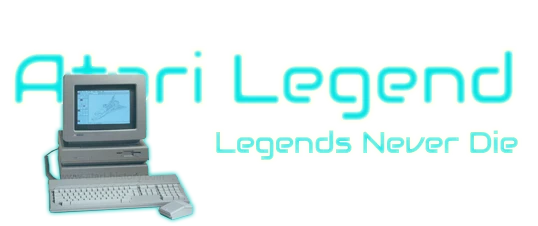

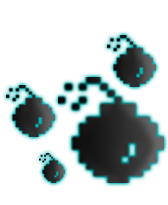





Son Shu Shi is an obscure platform game that was thought to be lost in time. The ST scene only had a corrupt version. Until today. With the imminent release of this classic it was time to get in touch with its creators and test their memory. This is a tale of two Belgian brothers who got bored of constantly playing games, so they switched sides and started creating them. And luckily for us, their machine of preference was the Atari ST.
There is currently no profile available in our database
1) Introduction
2) The spark that started it all
3) Game addicts
4) Discovering the 16bit era
5) The first games were born
6) Tools of the trade
7) The history of Krypton Egg
8) Finding a publisher
9) Commercial success?
10) The Demoscene
11) Staying in touch with old friends
12) Kralux
13) Iko San
14) Son Shu Shi
15) ST or Amiga, what shall it be?
16) Ripped of by the publishing company
17) The rebirth of a classic game
18) Spelling errors
19) Losing touch
20) Re-release
21) End of an era
22) The good ol' days
23) The best of the best
24) Favorite demo's
25) Mobile gaming
26) Today
27) The retro scene
28) Time for thank you's
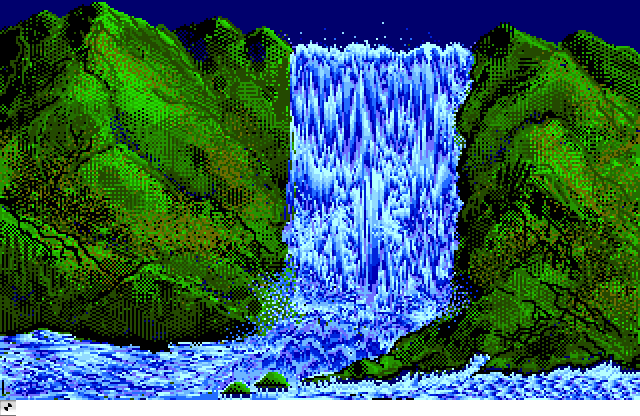
One of the most famous screens when the ST was introduced must be this animated waterfall created in Neochrome, programmed by the legendary Dave Staugus.
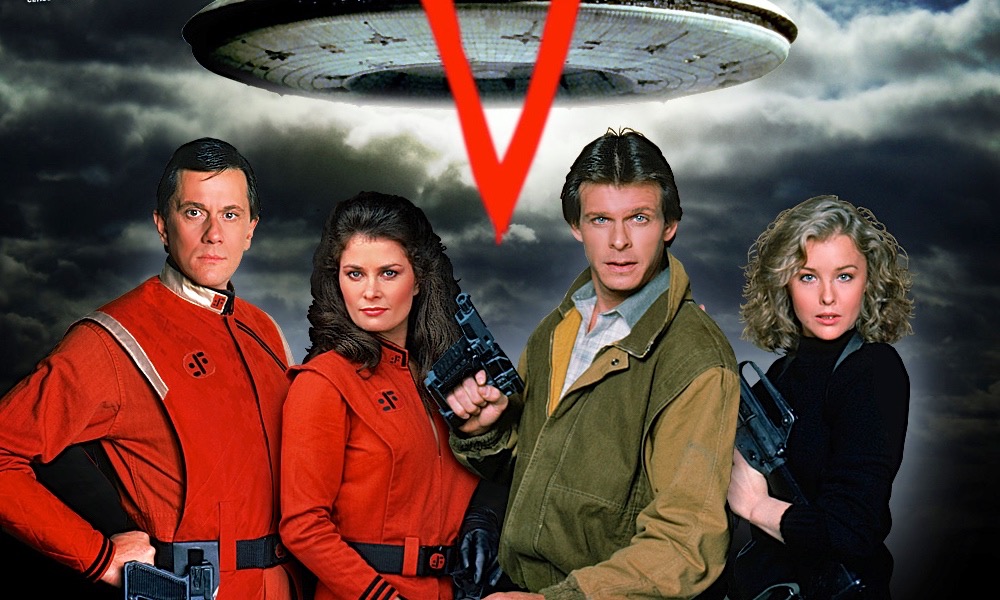
The series V was an inspiration for Alex's first game on the C64, which ended up being nothing more than a static screen.
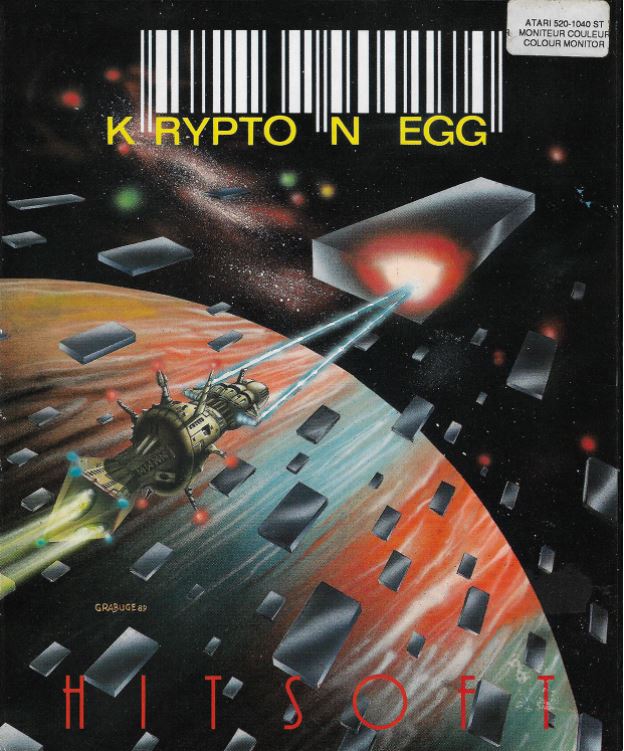
Krypton Egg was the first release, and what a debut it was. A crazy mix between Arkanoid and a sidescrolling shooter.
1) Hello Alexandre and Xavier. Can you introduce yourselves to us in a few words for those who have never heard of you guys before?
I am Alexandre and I am Belgian. Born and raised in Uccle, Brussels. I fell in love with computers when our dad bought us our first computer (C64) which he regretted afterwards, because we became addicts. Fortunately, we had to share it so we could only spend 50% of our time on it.
I am Xavier. My older brother, Alex, convinced me to ask our parents for a super cool Christmas gift for the both of us: The Assembly Language. Imagine the surprise of a 10 year old boy receiving that book for a programming language, when he was thinking that he ordered a game for Christmas >_< I, on the other hand, stuck to just playing games until much later when I discovered the Atari ST. Its 512 colours was the revelation that got me into programming. The systems and languages evolved but the passion for programming and games stayed.
2) So the C64 was your first computer? Or which one was it? What exactly sparked your interest in computers and programming?
Alex: Yes, The Commodore 64 was our first home computer, that was in 1984. I recall when our dad bought it and we first started playing games like Centipede, Gyruss, Beach-head, Choplifter, Pitfall, Ultima III, …
Xavier: Our dad was annoyed by us always asking for coins to use at the arcade, Luna parks. One day he decided to buy us a Commodore 64 thinking that would stop us begging for money. Little did he know that arcade games were one step ahead of their home computer counterparts. To much of his dismay, we were now not only playing at the arcade but also at home ;p
3) So you guys were big gamers back then?
Alex: Yes. All we did for the first year or two was play games.
Xavier: Yes, definitely. I played countless games. I never stopped. Once you jump in the developer seat, you realize that the pleasure of creating a game is much greater than actually playing one. I highly encourage anyone to try programming: It is a transcending experience.
4) When exactly, and under which circumstances, did you discover the Atari ST? And the Amiga?
Alex: After playing many many games, I kinda got bored of it and started to program in BASIC on the C64. After a while, the ST came out and we sold our C64 with all the games we had acquired to a friend from school and were able to buy an Atari ST with that money. Then came the Amiga 500. It was the most amazing and well conceived machine for its time. And even today, I still look at it as being 10 years ahead of its time. It is too bad that Commodore didn’t do well business-wise. I still remember the first picture of a baboon I saw in a computer magazine for the Amiga. It was vibrant, full of colours. Something we’d never seen before on a computer. It was a shock to see how powerful and beautiful that machine was. So we had to have it. We were fortunate to be able to buy it with the money we made of the sale of Krypton Egg on the Atari ST.
5) When did you actually begin creating games and what was your first title?
Alex: The first 'title' I worked on was a C64 game that never made it very far. It just had one static screen. It was inspired by the TV Series V (Aliens Invasion) and the idea was the player was hiding behind boxes and shooting at enemies coming at him, but it never got past the concept phase. Another game I worked on early on the C64 was some kind of Track and Field Olympic game. But it was never published either. After that, the first serious programming game effort was Krypton Egg on the Atari ST.
Xavier: While Alex was working hard at developing Krypton Egg on the Atari ST, I was still playing and learning programming. I helped design some levels, but Alex did all the programming, design and ideas.
6) Which tools did you use to create games back then?
Alex: I spent an entire full year developing Krypton Egg in assembly language on the Motorola 68000 processor. I can’t remember the tools but it must have been the main one to program in assembly on the ST.
7) So Krypton Egg was released in 1989, can you tell us a bit about its history?
Alex: It was a huge effort. Each day, coming back from school, after finishing my homework, I’d start working on it. Every day. It took a good 12 months of non-stop work to make it a reality. Luckily, we had friends who were great artists as well. One provided all the music and sound FX and the other all the graphics for the game.
8) The game was published by Hitsoft / Hitech. which mostly made games for Loriciel and was founded by Bertrand Brocard. How did you get in touch with him? Can you tell us more about this release/edition?
Alex: Well, it was my first experience in the world of selling software so I contacted a few different companies and never heard from most, except for Hitsoft. They were interested and then we entered in a contractual agreement. I didn’t really care about the terms to be honest since I was just so happy to see it published. The reviews were really good and that made me happy, even more than the financial reward since I was still a teenager at the time.
9) Do you have any idea how many copies of Krypton Egg were sold?
Alex: Not really. I don’t recall the numbers but towards the end, the company Hitsoft went bankrupt and so we never saw much money from the game since a lot was likely lost in the bankruptcy unfortunately. My memory from that experience was one of having been ripped off ...
10) Your work reminds a lot of the things that came from the demo scene. At one point, I even think Xavier was part of the demo groups The Raider Brothers and The Fallen Angels, correct? Your nickname was Sinew Shy. How did you become part of this scene?
Alex: We were big fans of the demo scene because it pushed the limits of what was possible. As programmers, we could really appreciate what was possible and every time when we thought the limit was reached, some new guy came out with something even more impressive by using a new technique that no one had thought of and then you’d be like "Oh yeah, that is how they did it!". Whereas before you’d have said it is impossible to do that… That was a great mind opening thing … it taught me that nothing is really impossible (almost).
Xavier: Yes, Sinew Shy was my pseudo. While developing Son Shu Shi, we were contacted by some Belgian members of The Fallen Angels. I became friends with one of them. Soon after, he invited me to a trip to Paris to an official software convention. That is how at 16 years old, I ended sleeping at 4am in an empty bank (ATM) with 2 other friends because of a chain of unfortunate events. The same day, we arrived in Paris and met numerous hackers & swappers. We all entered the convention. Their goal was simple: while one person would distract the booth owners, another one would eject and steal the disk containing the new or unreleased software. Later that evening, we all meet in a Burger King. Everyone emptied their pockets. The table was filled with a large stack of stolen software ready to hacked and swapped. The same night, hackers would be hard at work to remove the copy protection, and then massively duplicate the unreleased software and sent it the next day all over Europe. I was mindblown to discover their efficiency. That night, in Paris, we ended in a friend’s apartment with a famous hacker named Illegal. He was trying to break the protection of a famous music program while we were watching porn. Around 3am, our yells of success woke up our friend’s parent. The result was quite swift: we got kicked out in the middle of the night. That is how we ended up in that ATM ;-)
11) Did you have a lot of contacts in the demo scene (ST & Amiga)? And are you still in touch with any of them today?
Xavier: Not really. Alex moved to the US and I went to work in Paris. I did not keep many of my contacts. I do remember a completely exceptional person: Pascal de France alias Zarathustra. The first time, we met him in his Paris apartment, place Monge, he blew our mind. He was such a whizz kid and talented coder. He seemed to know almost everything. His humor and attitude of sharing information was something quite new for me, especially in the demo scene where most coders were not willing to share their secrets when the internet did not exist.
12) Alexandre, from your side, you used the nickname Kralux. Were you ever involved in a demoscene group as well?
Alex: No. I actually still use that pseudo to this day for many services…When I entered university at 17 in Polytech (Electrical Engineering), I really had to focus on school and I stopped programming games at that time unfortunately. The engineering program was extremely time consuming but I don’t regret it. I learnt so much about math and sciences for my future career.
13) Xavier, in 1991, you were working on the game Iko San. Even though the development of the game was astonishing, it never got published. Didn't you find any interest at that time? What happened?
Xavier: The game was nearly done but never got fully completed. A bitter ending happened: I developed the game with the help of L.E.M., a friend and a sharp demo scene coder. I was programming the game engine. He was doing the tools like an editor to place the blocks for each level. I wasn't satisfied with his level editor because it required the use of a joystick which I found very inconvenient. I decided to program a new level editor using a mouse. One day, I invited him for pancakes over at my place and wanted to change our partnership. When he arrived in my kitchen, I told him that I wanted to reduce his share because I created a new editor to replace his own. He took it as a bitter betrayal. He left my house without even touching a pancake. My arrogance and greediness had cost us an unreleased game and tarnished our friendship. The game was never released on the Atari ST. Later, It got released on the PC under the same name for a company called C2V.
14) Also in 1991, you released the obscure Son Shu Shi. Can you tell us a bit more about its origins? How did this game come about?
Xavier: Son Shu Shi was mostly designed by Philippe Geurten, the graphic artist who was bursting with cool ideas. He himself took much inspiration from Wonderboy. You can easily recognize the parallel between both games with creatures like the snails on the trees in the beach level.
15) Was this game created on the ST or on the Amiga? What were the challenges in creating this game? Are there things on the Amiga version that are not available on the ST because of the latter machine's limitations?
Xavier: Alex was programming on the Amiga while I was programming on the Atari ST. We were coding different levels or parts of the game and then sharing them between both computers. The Amiga version looks better because it has gradients in the background. One of the main technical challenges was the performance: everything had to be optimized for both machines.
16) The game got published by Expose Software. How did you get in touch with such a young company?
I can’t remember exactly. Sadly, we choose the wrong partner as we never received a single penny from them. I felt ripped off due to all the big promises from Expose Software making us dream, especially considering how much effort we had put into Son Shu Shi.
17) This game was lost on the Amiga format for a long time. Until a version surfaced in the 2000's. On the Atari ST, an original copy was finally found with the help Sebastien Laborie and Olivier Lhermite, who worked for Expose Software at one point in time. Was Son Shu Shi actually released in physical form? And do you have any idea if the game got sold?
We never got anything for it. We heard that a very small batch was released but we are unsure how true this actually is.
18) On the ST version, the name 'Son Shu Shi' only appears once, at the title screen. During the game however, the name 'Son Shu Si' is used. So, what is the official name of the game?
It's Son Shu Shi (pronounced 'son su shi' )
19) You mention there wasn't a lot of contact, but how did the relationship between you and Expose end?
Alex: I can't even remember. Maybe Xavier knows more about it….
Xavier: They have never been very transparent. They were always talking about delays and putting the blame on some third party. One day we got contacted by lawyers telling us that our names appeared in the company bankruptcy proceeds. After contacting the lawyers they told us that we could not expect any money because there were tons of unpaid invoices that needed to be served first. Basically, Expose Software has been a story of abuse of trust for us.
20. Sebastien Laborie will spread Son Shu Shi on the Atari really soon throughout the scene. He has worked very hard at removing all the copy protections, adding trainers and making it compatible for all Atari machines (even the Falcon). Have you been watching what he's been doing and what do you think about it?
Alex: I haven't seen his work yet. I’d love to see it though. I think it is great that people like him do this to keep the history of video games alive… Imagine in 100 years people looking back at this period. Thanks to people like Sebastien, they’ll have a good idea of how things were. Thank you!
Xavier: I am very grateful. I am looking forward seeing the fruits of his labour on our game.
21) When exactly did the Atari ST and Amiga adventure end for you guys?
Alex: Getting into Polytechnic school (Engineering) was the kiss of death for me… no more spare time.
Xavier: Son Shu Shi was a hard blow for me because it was never published and reviewed. It felt like a lot of work for nothing. After that, the Atari ST started to decline and I moved to the PC.
22) How do you feel about the old days? Can you share some memories?
Alex: Amazing memories… One of the best times of my life. Fun, creativity and being so close to the front lines. Everything was so much easier back then. A small group of people could do wonders.
Xavier: Incredible stories… Travelling other countries to go to copy parties. Friendships, sharing and playing games. Long nights of coding, exchanging ideas. Discovering the wonders of programming allowing to create whatever came to your mind.
23) What are the games that really stood out for you? On the Atari ST and/or the Amiga.
Atari ST:
- Sundog: The most epic space adventure game EVER! Finished it at least once...
- Dungeon Master: That game was EPIC!! Countless hours of dungeon adventures...
These first two were just above everything else for me. I’d love to remake Sundog one day...
- IK+: ST Karate was gorgeous too but can’t remember how playable it was in comparison.
- Populous: Super fun multiplayer game
- Prince of Persia
- Xenon: pretty much all Bitmap Brothers’ games were incredible with great soundtracks
- King’s Quest IV
- Gauntlet II: Fun to play together.
- Ultima III & IV
Amiga:
- Defender of the Crown: Super fun strategy with real-time skills.
- Lemmings: Hours of fun
- Speedball: Great action, superb programming
- Xenon 2: Megablast: Bomb the Bass’ music was incredible. Worth playing it on YouTube...
- Shadow of the Beast: Unplayable but amazing just to look at and the audio was out of this world.
- Another World: different visuals and technically novel
- Supercars II
24) And which are your favorite 5 demos on the Atari ST or Amiga?
Alex: I don’t remember because there were a lot and they kept on getting better and better with amazing audio and special visual effects...really impressive for the most part.
25) By the end of the 90's, you finally released some of your games to the PC platform. I'm talking about the aformentioned Iko San and of course Krypton Egg. And in 2009, Krypton Egg was even released for IOS. Did you never envision releasing all of your games on the mobile platform? Since this is THE hot thing to do for the past number of years now...
Alex: Xavier is the one who did all the PC versions of all our games in the 90’s and more of his own games like Iko San.
Xavier: Not really because the mobile platform does not have a joystick. It is better to make games that take advantages of the platform strengths like touch control rather trying to adapt games not suited for them.
26) What are you doing these days?
Flashback 15+ years ago, Xavier and I started a company called Javaground USA in California to make video games on mobile using the porting automation technology invented by Xavier. Here is a Wikipedia link to the defunct company.
We made a lot of great mobile games and we had a great team of programmers, artists and QA testers and worked with some very large movie studios. Unfortunately the 2008 economic crisis linked with the AppStore made us scale back the company and eventually closed it after reaching a peak of about 80 employees in the Summer 2008.
Alex: Today, I am involved in another startup called Chilicon Power where we design and manufacture microinverters for the solar industry. It is a lot of hardware design with firmware and cloud programming. The main drawback of that industry is the never ending regulations that kill any kind of innovation in the industry. A far cry from the video games industry from that respect…
Xavier: Since 2000, I have been mostly doing Java. First for J2ME features phones, then for Android devices. Our most notable game was UniWar that we sold to a company in Moldova in 2017. Since then, I have been interested in cryptocurrency. I have contributed to some open source projects related to Bitcoin Cash. Today, I am developing in Kotlin, Flutter & JavaScript.
27) Are you interested in the retro computer scene at all?
Yes and we have friends like Patrick Tamines who is still very active in that environment as well.
28) Thanks a lot for this interview guys. If you have any final words you like to share, don't hesitate.
Thank you for doing this!
Wanne learn more? See our full video.
August 5, 2025 by grams88
Martin Brownlow is a living legend. Best known among ST fans for creating the beloved PD/shareware classics Grav and Grav 2, his games are still cherished by many to this day. From a young age, Martin knew he wanted to make games for a living...and he made that dream a reality. In fact, he’s still doing it today. Discover the full story and much more in this exciting new interview.
October 4, 2024 by grams88
Stacey Jamieson began his career at DMA Design, working on titles such as Oh No! More Lemmings, Walker, GTA and others. Over the years, he moved on to Electronic Arts (EA), where he contributed to major games like the Star Wars Battlefront series, Mass Effect, and Need for Speed. Today, he is the co-founder of Expression Games, where he continues to pursue his passion for game development. What an exciting career!
July 29, 2024 by grams88
Who doesn't love a good underdog story? Chris Sharp is a noteworthy apprentice of the renowned François Lionet, as he mastered the art of coding with the almighty STOS Basic. Chris crafted a few games for our cherished ST, including fan favourites like Magic Tomb and the Freaked Out series. Intrigued? Dive into our interview to revisit the era when game development could still be a solo endeavour.
July 16, 2024 by grams88
When Sega released its Master System, it came bundled with the game Alex Kid. To this day the game remains very popular, loved by many. One of those people is Terry Lloyd. More so, Alex Kid was the main inspiration for the Atari ST platform classic Axel's Magic Hammer. But that is just one of his many accomplishments. Terry has been around the block. Working as an artist and game designer at the beginning of the 80's for Gremlin Graphics, he then moved on to Core Design, which he helped get off the ground. During the 90's he contributed to founding the company Malibu Interactive. On the Atari ST, Terry's resumé include Dynamite Dux, Car-Vup, Rick Dangerous 1 & 2, Torvak the Warrior, WarZone and many more. Read all about this veteran of the games industry in this exciting interview.
April 18, 2024 by grams88
It doesn't always have to be about computers, coding and graphics. Adrian Powell, the artist behind the original Lemmings game, crafted all its artwork, including box art and promotional materials. His passion for painting lemmings has persisted over time and he is still painting lemmings to this day. Powell's work remains influential and has helped selling millions of copies of this classic (ST) game.
Currently 0 registered users online
In the past 24h there were 2 registered users online